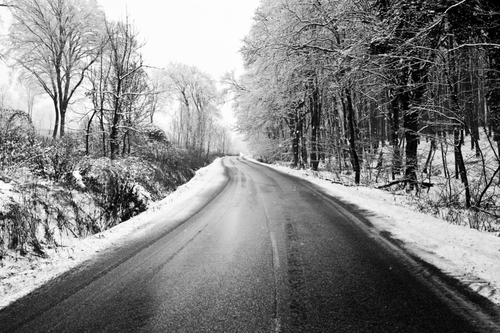
To answer the title question in one word: Very.
When thin sheets of ice form on North Carolina roads, even legendary NASCAR driver Dale Earnhardt Jr. struggles to keep his ride under control. While trying to stop and help a pair of motorists who had already crashed during a winter storm in Mooresville, N.C., Earnhardt skidded out on a patch of ice he never saw and wrecked his own car.
Neither Dale Jr. nor the other people on the scene suffered injuries, but they got lucky. “Each year,” the Federal Highway Administration notes on its Road Weather Management Program website, “24 percent of weather-related vehicle crashes occur on snowy, slushy or icy pavement and 15 percent happen during snowfall or sleet. Over 1,300 people are killed and more than 116,800 people are injured in vehicle crashes on snowy, slushy or icy pavement annually.”
LEARN MORE
- Safe Winter Driving Tips From a Personal Injury Attorney
- Can Winter Weather Relieve Liability for At-Fault Drivers in Personal Injury Cases?
- What Is Negligence in a North Carolina Car Accident?
Black ice is particularly dangerous because it forms quickly and invisibly, often on curves where drivers are prone to make errors. Bridges, overpasses, underpasses and highway ramps are also danger spots. Air circulating under a roadway rapidly cools pavement, and spots that rarely or never receive direct sunlight stay iced over longer than anywhere else.
According to the Weather Channel, black ice “is transparent because it blends in with road pavements since it is so thin, making it nearly impossible to see.” The hazard can emerge whenever any amount of moisture rests on pavement when the temperature falls below 32 degrees Fahrenheit.
Drivers cannot always avoid black ice, but there are ways to avoid crashes. Experts offer the following advice for when the wheels start slipping and the car starts sliding:
- Keep the steering wheel straight.
- Do not brake.
- Slow down by taking your foot off the accelerator.
Our North Carolina personal injury and wrongful death law firm knows firsthand the tragedy that can result when a driver responds poorly to hitting a patch of black ice. In one case, a truck driver slid off the highway and killed our client while he was standing outside his own disabled car.
An important lesson to take from that terrible loss of life is that drivers who spot wrecks along an icy or snowy highway should slow down and, if possible, change lanes to create a safety buffer. A patch of black ice that sent one car or truck off the road could easily cause a second, even worse crash. Anyone who doubts this should ask Dale Earnhardt Jr.
EJL